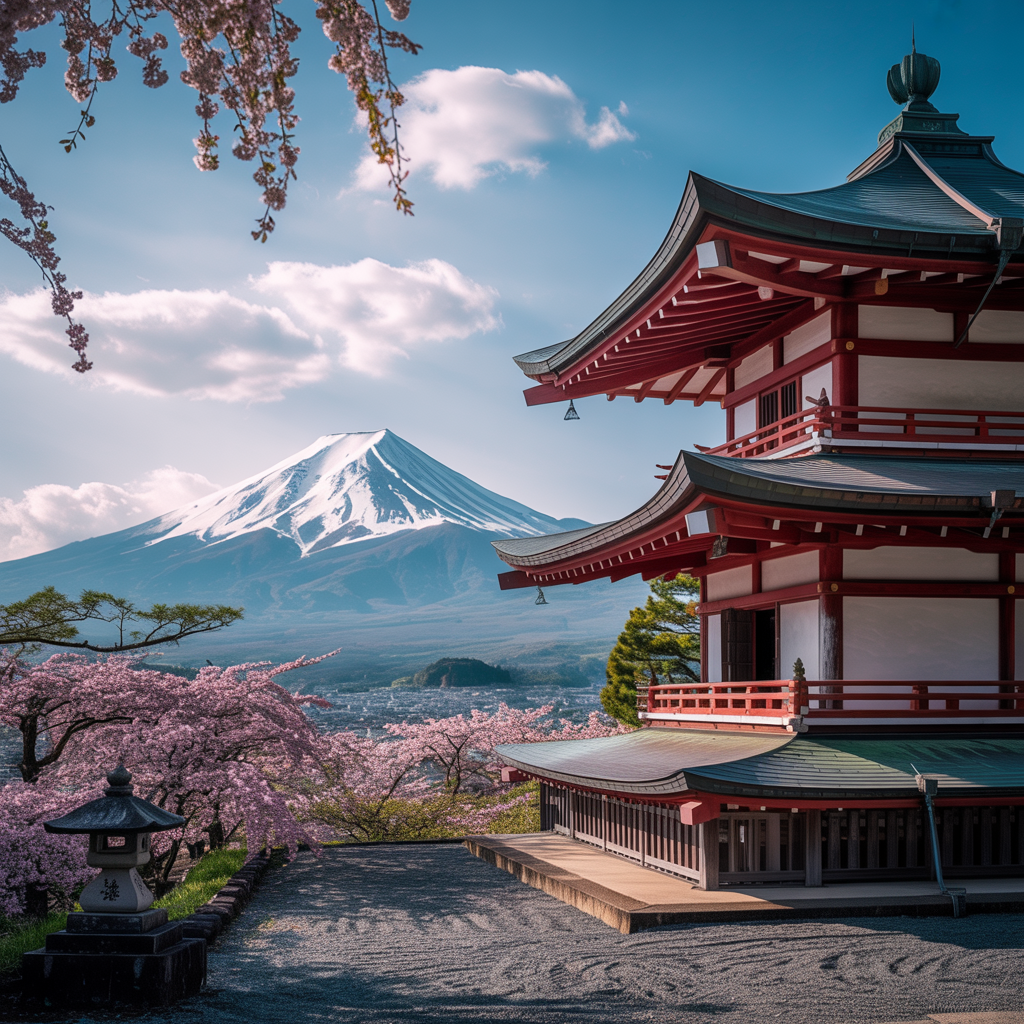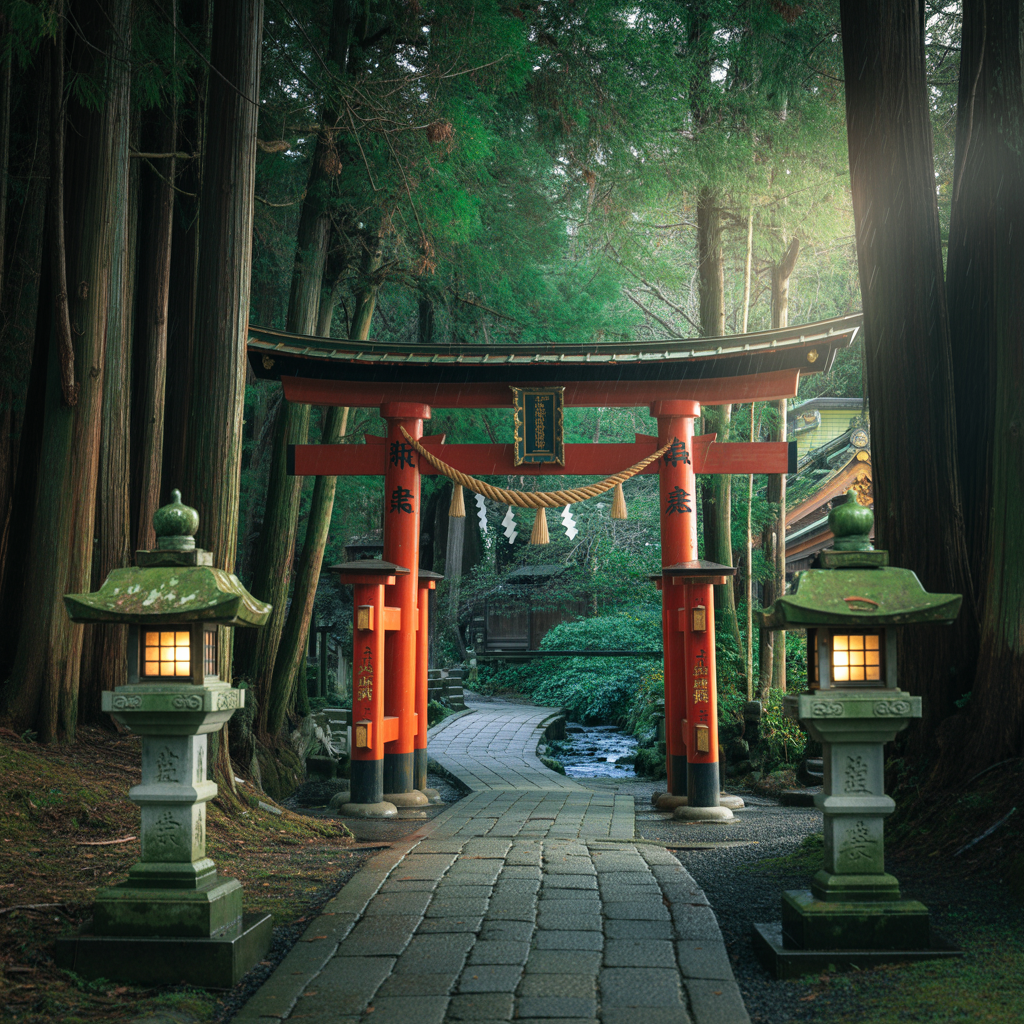Japan is a country where the past and present coexist in elegant harmony. One of the most compelling ways to experience this balance is by exploring its many shrines and temples. With over 80,000 shrines and more than 77,000 temples across the country, these sacred spaces are more than religious institutions—they are repositories of Japanese culture, art, and spirituality.
These temples and shrines reflect Japan’s rich tapestry of spiritual traditions, primarily Shintoism and Buddhism, which have coexisted for centuries. Many of these sites are deeply intertwined with nature, as seen in forested paths leading to hillside shrines, or tranquil gardens surrounding ancient temples. From hosting seasonal festivals to preserving ancient architectural styles, they serve as living monuments to Japan’s heritage.
In this comprehensive guide, we’ll take you through the 13 Best Temples in Japan, offering not only a list of must-visit spots but also insights into what makes each one spiritually and culturally significant. Whether you are drawn by their architectural splendor, historical depth, or serene atmosphere, these temples and shrines are sure to leave a lasting impression on every traveler.

1. Fushimi Inari Taisha (Kyoto)
One of Japan’s most iconic landmarks, Fushimi Inari Taisha is instantly recognizable by its thousands of vermilion torii gates winding through the wooded slopes of Mount Inari. Established in 711 AD, this shrine is dedicated to Inari, the Shinto deity of rice, agriculture, and business prosperity. The 4-kilometer hiking trail that stretches up the mountain is lined with smaller sub-shrines and fox statues, believed to be messengers of Inari.
The Senbon Torii (“thousands of torii gates”) pathway offers a spiritual and immersive experience, attracting millions of pilgrims and tourists annually. The gates, donated by individuals and companies, symbolize wishes for good fortune and success. Visiting Fushimi Inari Taisha at dawn or dusk provides a quieter, more introspective experience amidst the shrine’s mystical atmosphere.
Read More Blogs : Why Fushimi Inari Taisha Is One of the Best Temple in Japan
2. Kiyomizu-dera Temple (Kyoto)
Perched on the hillside of eastern Kyoto, Kiyomizu-dera is one of the most celebrated temples in Japan. Founded in 778 AD and now a UNESCO World Heritage site, the temple is famous for its wooden stage that juts out from the main hall, 13 meters above the hillside, offering panoramic views of Kyoto.
The name “Kiyomizu” means “pure water,” derived from the Otowa Waterfall that flows beneath the temple. Visitors often drink from its three separate streams, each believed to confer a different benefit: success in academics, love, or longevity. The temple is especially enchanting during cherry blossom season in spring and the vibrant foliage of autumn.
3. Kinkaku-ji (Golden Pavilion) (Kyoto)
Officially known as Rokuon-ji, Kinkaku-ji is a Zen Buddhist temple that dazzles visitors with its top two floors completely covered in gold leaf. Originally constructed in 1397 as a retirement villa for shogun Ashikaga Yoshimitsu, the structure was later converted into a temple.
Surrounded by a tranquil pond and meticulously landscaped gardens, the Golden Pavilion offers picture-perfect reflections in the water throughout the seasons. Despite being burned down in 1950 by a monk, the current reconstruction, completed in 1955, faithfully replicates the original and remains one of Kyoto’s most photogenic sites.
4. Senso-ji Temple (Tokyo)
Tokyo’s oldest and most popular temple, Senso-ji was founded in 645 AD and is located in the heart of Asakusa. It is dedicated to Kannon, the Buddhist goddess of mercy, whose statue was reportedly fished out of the nearby Sumida River by two fishermen.
The temple is approached through the Kaminarimon (Thunder Gate), an iconic symbol of Tokyo. Leading up to the main hall is the Nakamise-dori, a bustling shopping street filled with traditional snacks, souvenirs, and cultural trinkets. Despite heavy damage during World War II, Senso-ji was rebuilt and remains a powerful symbol of resilience and spiritual continuity.

Read More Blogs : Top 7 Hidden Places in Manali You’ll Fall in Love
5. Todaiji Temple (Nara)
Todaiji Temple is a marvel of Japanese religious architecture and home to the Daibutsu—one of the largest bronze Buddha statues in the world, standing at 15 meters tall. The temple was constructed in 752 AD during the Nara period and served as the head temple of all provincial Buddhist temples in Japan.
The Great Buddha Hall (Daibutsuden) was once the largest wooden building in the world. Even after being rebuilt at two-thirds of its original size, it remains one of the largest wooden structures globally. The temple grounds are also home to friendly, free-roaming deer, considered messengers of the gods in Shinto belief.
6. Kasuga Taisha (Nara)
Kasuga Taisha is a beautiful Shinto shrine established in 768 AD by the powerful Fujiwara clan. Renowned for its hundreds of bronze lanterns hanging along the corridors and stone lanterns lining the approach, the shrine is especially captivating during the Lantern Festivals held in February and August when all are lit at once.
Set within Nara Park and surrounded by a primeval forest, Kasuga Taisha is part of the UNESCO-listed “Historic Monuments of Ancient Nara.” It exemplifies the Shinto reverence for nature and ancestral worship.
7. Ise Grand Shrine (Mie Prefecture)
Ise Jingu, or Ise Grand Shrine, is considered the most sacred Shinto site in Japan. Dedicated to Amaterasu, the sun goddess and mythological ancestor of the Imperial family, it comprises two main shrines: Naiku (Inner Shrine) and Geku (Outer Shrine).
What makes Ise Jingu unique is the Shikinen Sengu, a ritual rebuilding of the entire shrine complex every 20 years. This tradition has continued for over 1,300 years, symbolizing death and renewal, and preserving ancient architectural techniques.
8. Izumo Taisha (Shimane Prefecture)
Izumo Taisha is among the oldest and most significant Shinto shrines in Japan, believed to be the gathering place of all the gods during the tenth lunar month, known in Izumo as Kamiarizuki (the month of the gods).
Dedicated to Okuninushi, the deity of love and matchmaking, the shrine is a popular destination for those seeking romantic blessings. Its main hall, at 24 meters high, is one of the tallest shrine structures in Japan.
9. Byodo-in Temple (Uji)
Byodo-in Temple, a UNESCO World Heritage site, was originally built in 998 AD as a countryside villa for Fujiwara no Michinaga. It was later converted into a temple and is famous for its Phoenix Hall, which appears on the Japanese 10 yen coin.
An exquisite example of Pure Land Buddhist architecture, the Phoenix Hall houses a seated Amida Buddha statue and is surrounded by a peaceful garden that mirrors paradise as described in Buddhist scriptures.
10. Suwa Taisha (Nagano Prefecture)
Suwa Taisha is a unique complex of four Shinto shrines located around Lake Suwa. It is one of the oldest shrines in Japan, with roots tracing back over 1,200 years.
The shrine is famous for the Onbashira Festival, held every six years, in which massive logs are cut from the mountains and ridden down steep slopes by brave participants before being erected at the shrine. This spectacular and dangerous event symbolizes strength and renewal.
11. Kamigamo Shrine (Kyoto)
Established in 678 AD, Kamigamo Shrine is one of the oldest Shinto shrines in Kyoto and an important cultural property. It is especially known for the Aoi Matsuri, one of Kyoto’s three major annual festivals.
The festival features an elegant procession of people dressed in Heian-period garments and is a vivid recreation of court life from over 1,000 years ago. Kamigamo Shrine’s tranquil surroundings and historical importance make it a must-visit.
12. Ryoan-ji Temple (Kyoto)
Ryoan-ji Temple is a Zen temple renowned for its simple yet profound rock garden. Comprised of 15 rocks arranged in a sea of white gravel, the garden’s design is open to interpretation, encouraging contemplation and inner peace.
A UNESCO World Heritage site, Ryoan-ji offers a meditative retreat from Kyoto’s bustling streets and invites visitors to experience the essence of Zen philosophy.

13. Toshogu Shrine (Nikko)
Located in Nikko, Toshogu Shrine is a lavishly decorated complex dedicated to Tokugawa Ieyasu, the founder of the Tokugawa shogunate. The shrine is part of the UNESCO-listed “Shrines and Temples of Nikko.”
Toshogu’s ornate carvings, gold leaf embellishments, and famous “Three Wise Monkeys” relief make it a vibrant celebration of Edo-period craftsmanship. Surrounded by forested mountains, the site is both spiritually and aesthetically awe-inspiring.
Conclusion
The 13 Best Temples in Japan represent a cross-section of the country’s spiritual and historical richness. From Kyoto’s golden pavilions and Tokyo’s bustling Senso-ji to the quiet elegance of Ryoan-ji and the divine atmosphere of Ise Jingu, these sacred spaces offer travelers profound insight into Japanese culture.
Whether you’re seeking tranquility, historical knowledge, or spiritual reflection, visiting these temples and shrines will deepen your appreciation for Japan’s timeless traditions and enduring reverence for nature and the divine.

One thought on “13 Best Temples in Japan: A Journey Through Tradition and Spirituality”